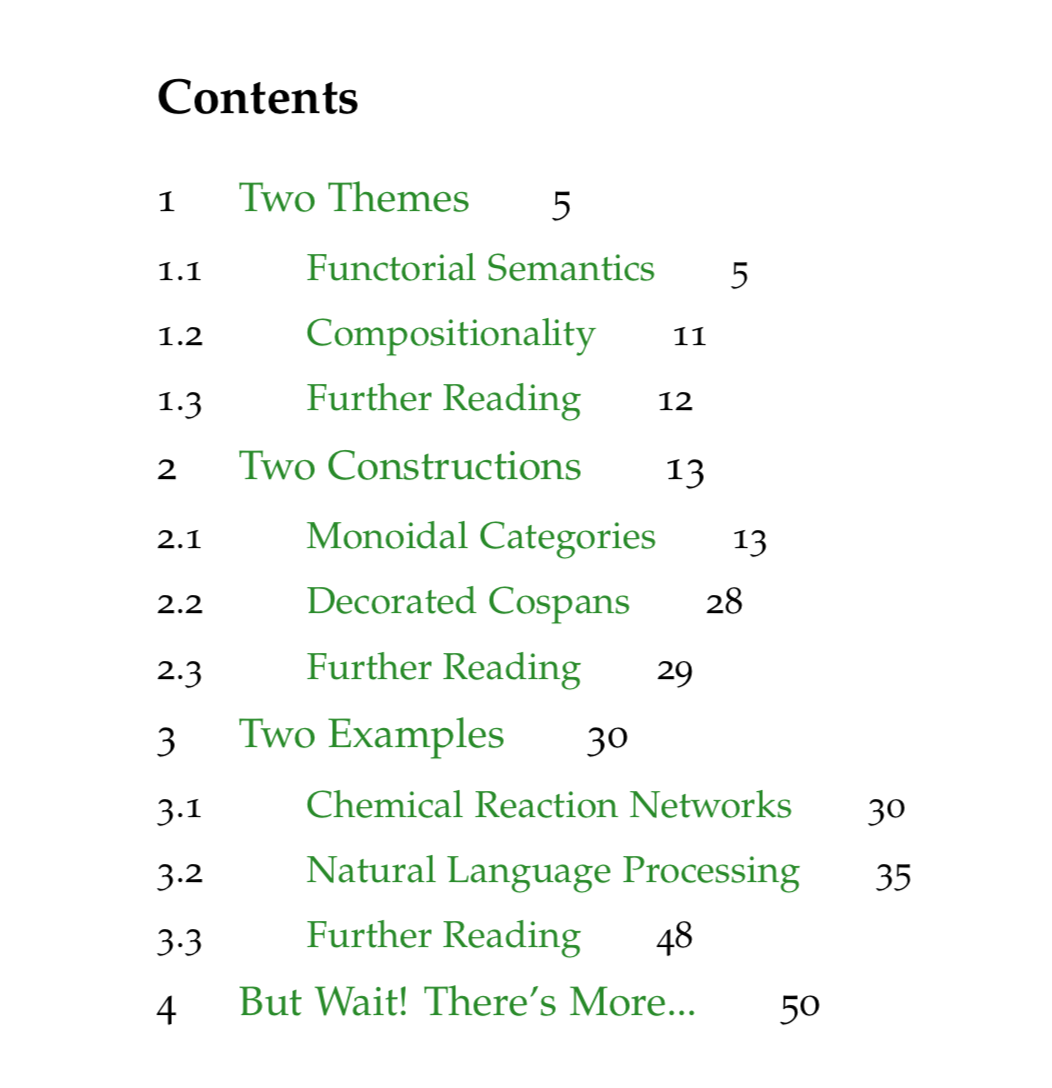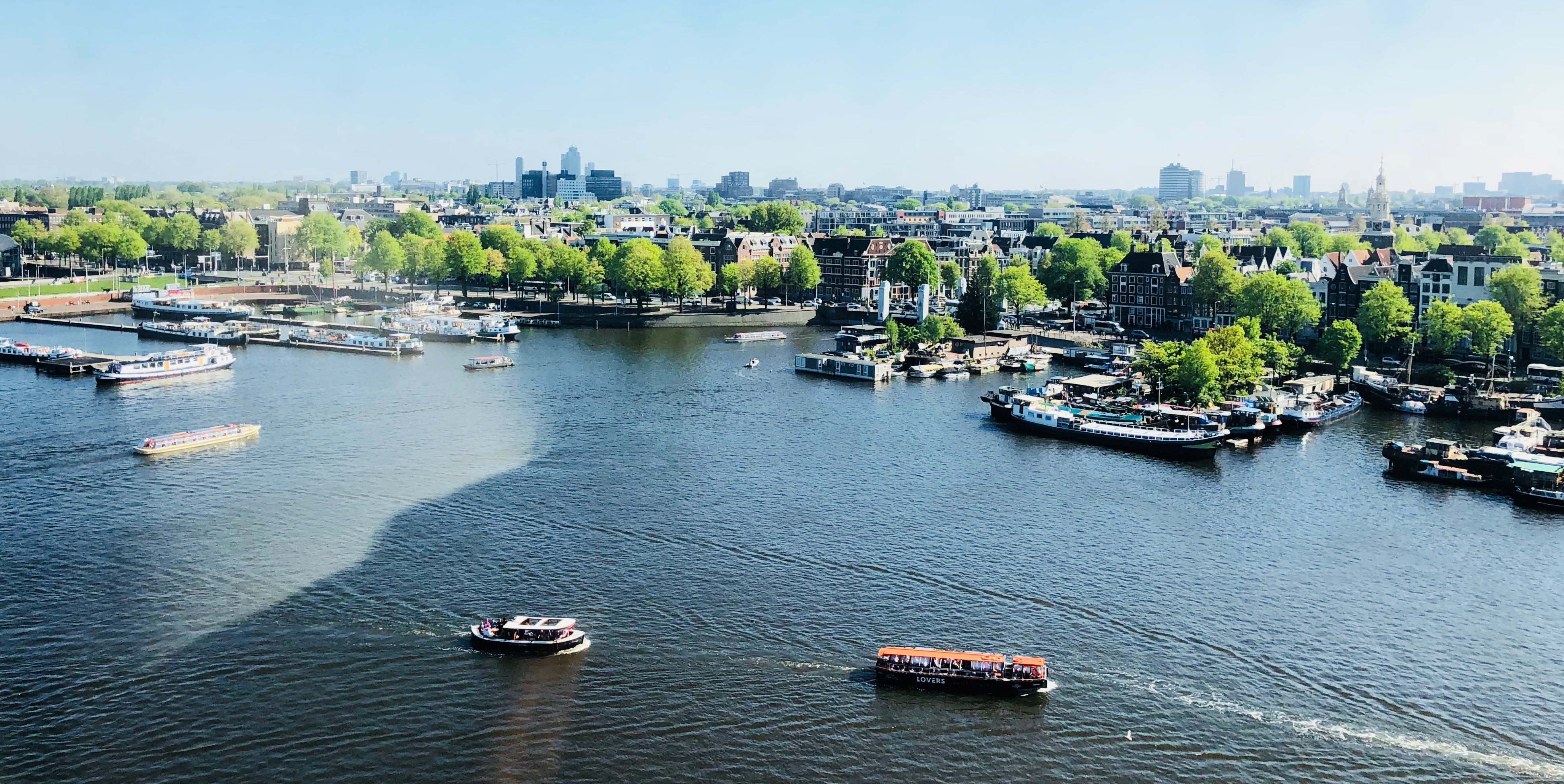Notes on Applied Category Theory
Have you heard the buzz? Applied category theory is gaining ground! But, you ask, what is applied category theory? Upon first seeing those words, I suspect many folks might think either one of two thoughts:
- Applied category theory? Isn't that an oxymoron?
- Applied category theory? What's the hoopla? Hasn't category theory always been applied?
For those thinking thought #1, I'd like to convince you the answer is No way! It's true that category theory sometimes goes by the name of general abstract nonsense, which might incline you to think that category theory is too pie-in-the-sky to have any impact on the "real world." My hope is to convince you that that's far from the truth.
For those thinking thought #2, yes, it's true that ideas and results from category theory have found applications in computer science and quantum physics (not to mention pure mathematics itself), but these are not the only applications to which the word applied in applied category theory is being applied.
So what is applied category theory?
To help answer this question, I've written a little booklet—a collection of expository notes inspired by the 2018 Applied Category Theory workshop that took place in the Netherlands earlier this year. That booklet is now available on the arXiv, and you can access it by clicking the title page below!

As I mention in the booklet's introduction, the goal is to give a taste of applied category theory from a graduate student's perspective. In doing so, I've shared two themes and two constructions that appeared frequently during the workshop. The math underlying these themes and constructions is not new. The newness, rather, is in how they are being applied. To illustrate the themes and constructions, I've also shared two examples—two research projects in the field of applied category theory. The first relates to chemistry (via work of Baez and Pollard) and the second to natural language processing (via work of Coecke, Sadrzadeh, and Clark). Scattered amongst the themes, constructions, and examples are a few digressions into other topics that I think are worth exploring. Here's the table of contents in a little more detail:

The content—which assumes knowledge of basic category theory—is an extended version of a talk I gave at the category theory seminar at Johns Hopkins University earlier this year. Initially, I planned to turn those talk notes into a blog post, but one blog post turned into two, and two turned into five, and five turned into 50 pages, and so here we are!
Now there is much more to applied category theory than what I've included in the booklet. I've only presented a very tiny subset of hand-selected ideas. For that reason, the notes are sprinkled with lots of links to other resources where you can discover more themes, constructions, and examples within the field.
Enjoy!
"Category theory is a branch of mathematics originally developed to transport ideas from one branch of mathematics to another, e.g. from topology to algebra. Applied category theory refers to efforts to transport the ideas of category theory from mathematics to other disciplines in science, engineering, and industry."
- appliedcategorytheory.org


